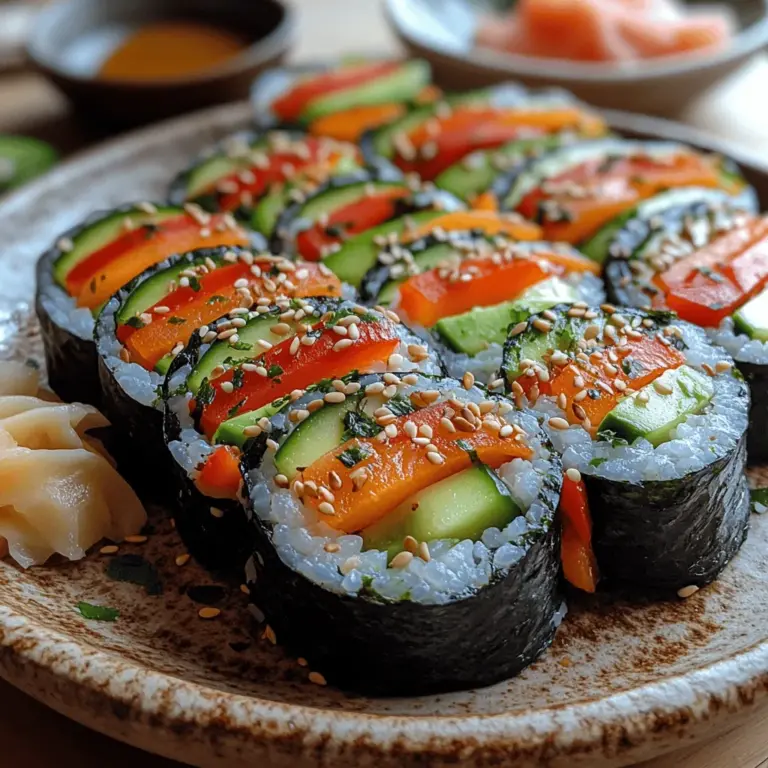Introduction
Lasagna, a beloved dish that has warmed the hearts and stomachs of many, boasts a rich history steeped in Italian tradition. Originating from the culinary kitchens of ancient Greece and subsequently embraced by the Italians, lasagna has evolved into a staple in households around the world. Its layers of pasta, savory meat, creamy cheese, and robust tomato sauce create a symphony of flavors and textures that make it a favorite for family gatherings, celebrations, and cozy dinners alike.
While store-bought lasagna may offer convenience, nothing compares to the delightful experience of crafting this dish from scratch. Homemade lasagna allows for customization, ensuring that each ingredient meets your taste preferences and dietary needs. The satisfaction of pulling a perfectly baked lasagna from the oven, its aroma filling the air, is unmatched. This guide will take you through the essential ingredients, preparation steps, valuable tips, and even variations of this classic dish, allowing you to create a lasagna that is not only delicious but also a personal masterpiece.
Understanding Lasagna
At its core, lasagna is a dish made by layering sheets of pasta with various fillings, including meat, cheese, and sauce. The traditional components of lasagna typically include lasagna noodles, a rich meat sauce, a creamy cheese mixture, and a flavorful tomato sauce. The combination of these elements is what gives lasagna its characteristic heartiness and depth of flavor, making it a comfort food that resonates with many.
Regional variations of lasagna abound, each offering unique twists that reflect local ingredients and culinary traditions. For instance, in Bologna, Italy, the classic lasagna alla Bolognese features a meat sauce made from ground beef and pork, layered with béchamel sauce and Parmigiano-Reggiano cheese. In contrast, the Neapolitan version may incorporate fresh vegetables and ricotta cheese. Beyond Italy, lasagna has made its way into various cuisines, with adaptations that include seafood, vegetarian options, and even gluten-free noodles. This versatility contributes to lasagna’s status as a cherished family meal, as it can easily be tailored to suit different tastes and dietary restrictions.
Key Ingredients for Classic Lasagna
To create a classic lasagna that captures the essence of this iconic dish, it’s essential to understand the key ingredients involved.
Overview of Essential Ingredients
1. Pasta Layers: The foundation of lasagna lies in its pasta layers. Traditionally, lasagna noodles are either fresh or dried, each providing a distinct texture and taste. Fresh lasagna noodles tend to be more delicate and can absorb flavors more readily, while dried noodles offer a firmer bite and are often more convenient to use.
2. Meat and Sauce Options: The meat sauce is the heart of lasagna, typically made with ground beef or pork. However, for those preferring a vegetarian option, a mix of sautéed vegetables or lentils can serve as a suitable alternative. The sauce should be rich and hearty, often simmered for an extended period to enhance its flavors.
3. Tomato Sauce: A good tomato sauce is crucial to achieving the right balance of acidity and sweetness in lasagna. Whether you opt for a homemade marinara or a store-bought version, look for options that contain high-quality tomatoes and minimal added sugars.
4. Cheese Selection: Cheese plays a vital role in lasagna, contributing creaminess and flavor. The trio of ricotta, mozzarella, and Parmesan is a classic combination. Ricotta provides a rich, creamy layer, mozzarella offers gooeyness and stretch, while Parmesan adds a sharp, nutty flavor that elevates the dish.
5. Herbs and Spices: Fresh herbs such as basil and oregano, along with garlic, are essential for balancing the flavors of the dish. These aromatic ingredients not only enhance the taste but also contribute to the overall aroma of the lasagna as it bakes.
Types of Lasagna Noodles: Fresh vs. Dried
When it comes to choosing lasagna noodles, the decision between fresh and dried can significantly impact the final dish. Fresh lasagna noodles, often made from a simple dough of flour and eggs, provide a tender and luxurious texture. They cook quickly and blend seamlessly with the sauce and fillings. On the other hand, dried lasagna noodles are widely available, easy to store, and can be cooked directly in the baking dish with sufficient sauce. Depending on your preference and time constraints, either option can yield delicious results.
Traditional Meat Sauce: Ground Beef, Pork, or a Vegetarian Alternative
A traditional meat sauce typically combines ground beef and pork, simmered with tomatoes, onions, garlic, and herbs. The key to a flavorful sauce lies in allowing it to simmer for a while, which melds the flavors beautifully. For those opting for a vegetarian version, consider using lentils, mushrooms, or a hearty mix of vegetables sautéed with spices to create a robust filling that stands up to the rich layers of cheese and pasta.
Importance of a Good Tomato Sauce
A well-crafted tomato sauce is the backbone of any good lasagna. Whether you’re making your own or using a store-bought version, look for sauces that are rich in flavor without excessive added sugars. A robust tomato sauce will provide the necessary moisture to cook the noodles while imparting a delightful flavor that complements the other ingredients.
Cheese Selection: Ricotta, Mozzarella, and Parmesan
Each cheese in lasagna serves a unique purpose. Ricotta cheese, with its creamy texture, creates a luscious filling when combined with eggs and spices. Mozzarella cheese, often layered generously, melts beautifully and adds that beloved gooey quality to the dish. Parmesan cheese, sprinkled between layers and on top, provides a sharp contrast that enhances the overall flavor profile. Using high-quality cheeses will elevate your lasagna, ensuring that each bite is rich and satisfying.
Herbs and Spices: Basil, Oregano, and Garlic
Herbs and spices are essential for achieving a well-balanced flavor in lasagna. Fresh basil and dried oregano are classic choices that add warmth and earthiness, while garlic lends a fragrant note that complements the acidity of the tomato sauce. Experimenting with these herbs can help tailor the dish to your personal preferences, making it a signature meal for family and friends.
Step-by-Step Preparation of Classic Lasagna
Now that you’re familiar with the key ingredients, it’s time to dive into the step-by-step preparation of classic lasagna. This section will guide you through the essential processes, ensuring your lasagna turns out perfectly every time.
Preparing the Meat Sauce
The first step in creating your lasagna is to prepare the meat sauce. Start by heating a large skillet over medium heat. Add a drizzle of olive oil, then sauté chopped onions until they become translucent. Once the onions are softened, add minced garlic and cook for an additional minute, allowing its aroma to fill the kitchen.
Next, incorporate the ground beef and pork into the skillet, breaking it up with a wooden spoon. Cook until the meat is no longer pink, ensuring it’s well browned for maximum flavor. At this point, add diced tomatoes, tomato paste, and your choice of herbs. Allow the sauce to simmer, stirring occasionally, so that the flavors meld together. A good meat sauce should simmer for at least 30 minutes to achieve the right consistency and depth of flavor.
Cooking Techniques and Tips for Flavor Enhancement
To enhance the flavor of your meat sauce further, consider adding a splash of red wine to deglaze the pan after browning the meat. This will lift any caramelized bits from the bottom of the skillet and deepen the overall taste of the sauce. Additionally, a pinch of sugar can help balance the acidity of the tomatoes, creating a well-rounded sauce that complements the other lasagna components.
Making the Cheese Mixture
While your meat sauce simmers, it’s time to prepare the cheese mixture. In a mixing bowl, combine ricotta cheese, beaten eggs, and a sprinkle of salt and pepper. The eggs will help bind the mixture, providing structure to the layers. Feel free to incorporate fresh herbs like basil or parsley for added flavor. Mixing well ensures that each layer will be rich and creamy.
Assembling the Lasagna
Once your sauce and cheese mixture are ready, the next step is assembling the lasagna. Begin by preheating your oven to 375°F (190°C). To start, spread a thin layer of meat sauce on the bottom of a baking dish. This prevents the noodles from sticking.
Layer the first sheet of lasagna noodles over the sauce, followed by a generous layer of the ricotta cheese mixture. Spoon more meat sauce over the cheese layer, then add a layer of mozzarella cheese. Repeat this process, alternating layers of noodles, cheese mixture, and sauces until all ingredients have been used, finishing with a layer of noodles topped with sauce and mozzarella.
Layering Techniques for Optimal Flavor and Texture
The key to successful lasagna is in the layering technique. Ensure that each layer is evenly distributed, allowing the flavors to meld together as the lasagna bakes. Avoid overloading any one layer, as this can lead to uneven cooking and a messy final product.
Tips on Portioning Ingredients
When portioning your ingredients, consider the size of your baking dish and the number of servings you wish to create. It’s helpful to plan for about three to four layers, depending on the depth of your dish. This ensures that each serving is balanced and full of flavor.
By following these steps and techniques, you’ll be well on your way to creating a classic lasagna that delights the senses and brings family and friends together around the dinner table. Stay tuned for the next section, where we will explore baking the perfect lasagna to achieve that golden, bubbling top we all love.
{{image_2}}
Oven Preheating and Temperature Settings
Before you embark on your journey to create the perfect Rainbow Veggie Sushi Rolls, it’s essential to preheat your oven if you wish to toast your sushi nori or prepare additional ingredients that can be crisped up for texture. Set your oven to a low temperature of 350°F (about 175°C). This gentle heat will help enhance the flavors of the ingredients without burning or overcooking them.
Timing for Baking
When toasting nori or any other ingredients, keep an eye on the clock. Toasting typically takes about 5 to 7 minutes. Check frequently to ensure that the nori becomes crisp and fragrant but does not turn too dark. For other components like roasted vegetables, depending on their size, cooking may take between 15 to 25 minutes. Always remember to toss or turn them halfway through to ensure an even roast.
Techniques for Achieving a Golden Crust
Achieving that golden, crunchy texture in your sushi rolls is all about selecting the right components and cooking them correctly. For instance, if you are incorporating roasted vegetables such as bell peppers or sweet potatoes, cut them into uniform pieces. This ensures even cooking. Additionally, a light coating of olive oil sprinkled with salt before roasting can help achieve that golden crust. If you’re experimenting with tempura-style veggies, dipping them in a light batter before frying will create a delightful crunch that contrasts beautifully with the soft sushi rice.
How to Tell When Your Sushi Rolls are Ready
Once your sushi rolls are assembled, it’s time to slice them for serving. Here are a few tell-tale signs that they are ready:
1. Visual Appeal: The rolls should be tight and cylindrical, with no filling spilling out. Each slice should show a beautiful cross-section of vibrant colors.
2. Rice Texture: Sushi rice should be sticky yet tender, holding its shape without being mushy. If you’ve properly cooled it to room temperature, it should cut easily without crumbling.
3. Flavor Assessment: Take a small bite of a roll before serving; the flavors should be balanced, with a pleasing combination of the fresh veggies and rice.
Serving Suggestions
When it comes to serving your Rainbow Veggie Sushi Rolls, the presentation can elevate the dish from ordinary to extraordinary. Here are some ideal accompaniments and presentation tips:
– Dipping Sauces: Offer a variety of dipping sauces like soy sauce, spicy mayo, or a sesame seed dressing to complement the rolls. A drizzle of wasabi for those who enjoy a bit of heat can also be a hit.
– Side Salads: A simple cucumber salad dressed with rice vinegar and sesame oil can provide a refreshing contrast to the sushi. Additionally, a seaweed salad adds a touch of umami.
– Garlic Bread: While not a traditional pairing, a crusty garlic bread can be a delightful surprise for those who enjoy a fusion of flavors. The aromatic garlic complements the sushi rice beautifully.
– Presentation Tips: Arrange the sushi rolls on a decorative platter, garnishing with pickled ginger and garnishes like sliced radishes or edible flowers for a vibrant touch. Using a bamboo mat to help create uniform rolls can also enhance the visual appeal.
Common Mistakes to Avoid
Creating the perfect Rainbow Veggie Sushi Rolls can seem daunting, but avoiding these common mistakes will ensure your sushi is a success:
– Overcooking or Undercooking the Rice: Sushi rice should be cooked to a perfect sticky consistency. Overcooking can make it mushy, while undercooking results in a hard texture. Follow package instructions closely for the best results.
– Using Too Much Sauce or Cheese: In sushi, balance is key. Overloading the rolls with sauces can make them soggy and difficult to handle. A light touch with sauces and dressings will keep your sushi fresh and enjoyable.
– Not Letting the Sushi Rest Before Slicing: After rolling, allow your sushi rolls to rest for about 5 minutes before slicing. This helps the rice stabilize, making it easier to cut without falling apart.
Variations on the Classic Sushi Recipe
One of the joys of making Rainbow Veggie Sushi Rolls is the opportunity for creativity. Here are some variations you might consider:
– Vegetarian Options: Enhance your rolls with a variety of vegetables such as roasted beets, carrots, or even avocado. These additions not only add flavor but also create an eye-catching presentation.
– Incorporating Vegetables: Spinach, zucchini, or mushrooms can be excellent additions. Each brings a unique texture and flavor profile, allowing for a customizable experience.
– Gluten-Free Alternatives: If you’re looking for gluten-free options, consider using zucchini noodles or gluten-free sushi rice. These alternatives maintain the integrity of the dish while accommodating dietary restrictions.
– International Twists: Experiment with flavors from different cuisines. A Mexican-inspired sushi could feature black beans, corn, and avocado, while a Greek moussaka-inspired roll could use eggplant, spiced ground meat, and feta cheese.
Storing and Reheating Sushi
If you find yourself with leftover Rainbow Veggie Sushi Rolls, proper storage is essential to keeping them fresh:
– Best Practices for Storing Leftovers: Wrap the sushi rolls tightly in plastic wrap or place them in an airtight container in the refrigerator. This prevents them from drying out and maintains their texture.
– Freezing Tips for Long-Term Storage: If you want to store them for an extended period, consider freezing. Wrap each roll in plastic wrap and then in foil. This can help preserve their freshness for up to one month.
– Reheating Methods: While sushi is best enjoyed fresh, if you need to reheat, place it in the microwave for a few seconds to take the chill off. Be cautious not to heat for too long, as this can alter the texture of the rice.
Nutritional Information
Rainbow Veggie Sushi Rolls are not only delicious but also packed with nutritional benefits. Here’s an overview of what makes them a healthy choice:
– Low in Calories: Sushi made with fresh vegetables and sushi rice tends to be lower in calories compared to heavier dishes. This makes it suitable for a light lunch or dinner.
– Rich in Nutrients: The variety of vegetables used provides a wealth of vitamins and minerals, including vitamin A from carrots, vitamin C from bell peppers, and healthy fats from avocado.
– Potential Modifications for Healthier Options: If you’re looking to make your sushi even healthier, consider using brown rice instead of white rice for added fiber or incorporating more nutrient-dense vegetables.
Conclusion
Making Rainbow Veggie Sushi Rolls at home is not only a delightful culinary experience but also a way to engage with loved ones through food. The joy of crafting these vibrant rolls lies not only in the flavors but also in the creative possibilities each roll holds. Don’t be afraid to experiment with ingredients, techniques, and presentations; the joy of sharing a homemade meal is as fulfilling as the dish itself.
Embrace the communal aspect of mealtime by inviting friends or family to join you in crafting these colorful rolls. Whether served at a casual gathering or an elegant dinner, Rainbow Veggie Sushi Rolls are sure to impress. So roll up your sleeves, get creative, and enjoy the satisfaction of sharing your homemade sushi with others.


